When it comes to biological weirdness, nowhere on earth do things get as collectively bizzare as Australia.
Think multi-pronged genitalia, venomous-but-scrotumless platypus, heaps of stupid common names, crazed cassowaries, and multi-vaginaed kangaroos. Speaking of kangaroos, I’ll take this moment to point out Bill Bryson’s excellent observation that Australia is the only country that regularly eats its two national symbols: the kangaroo and the emu. (And yes, they’re delicious.)
So read on for a compilation of some of the wonderful wildlife weirdness from Oz. And after you finish reading, say a brief prayer that the IT department never reads my internet search history.
-
Marsupials didn’t evolve in Australia.
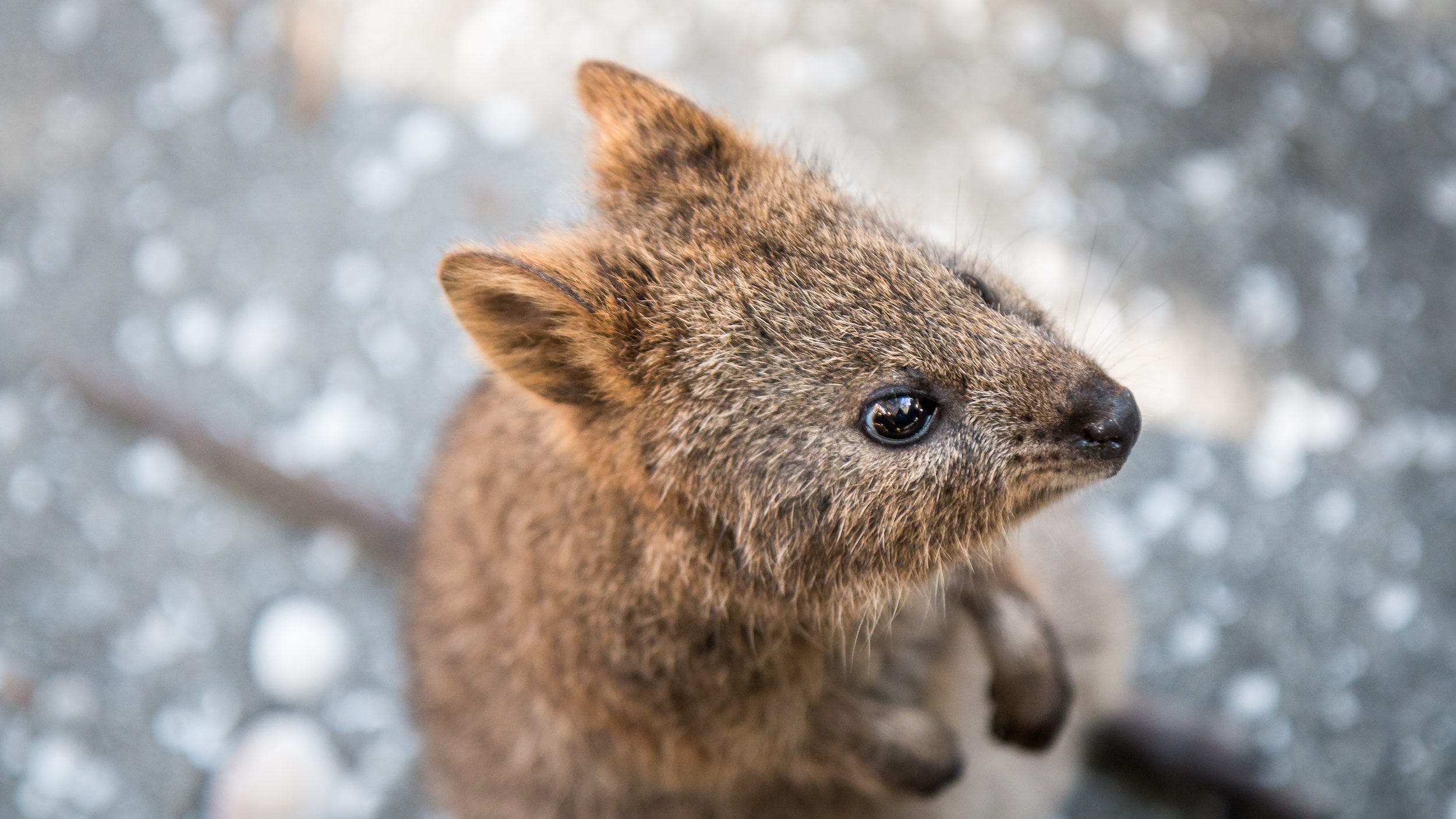
Yes, this is the one that everyone takes a selfie with. Aka a quokka. Photo © Barney Moss / Flickr Surprise! Australia may have heaps and heaps of marsupials, but the first marsupials didn’t evolve here. They evolved in the Americas. Mind blown? Keep reading.
The first true marsupial fossil is from Montana (yes, Montana) dating to about 65 million years ago. From there marsupials spread into what is now South America, then to Antarctica, and then Australia (all three were once connected as part of the super continent Gondwana). It’s thought that all Australian marsupials today evolved from a South American ancestor, possibly related to the modern-day monito del monte, that rafted across the narrow ocean channel between Antarctica and Australia around 50 to 60 million years ago.
Here in North America, we’re just left with the hapless-but-lovable Virginia Opossum. Along with ground-sloths, terror birds, and short-faced bears, the marsupials of the Americas are past their glory days.
-
Koalas have two thumbs.
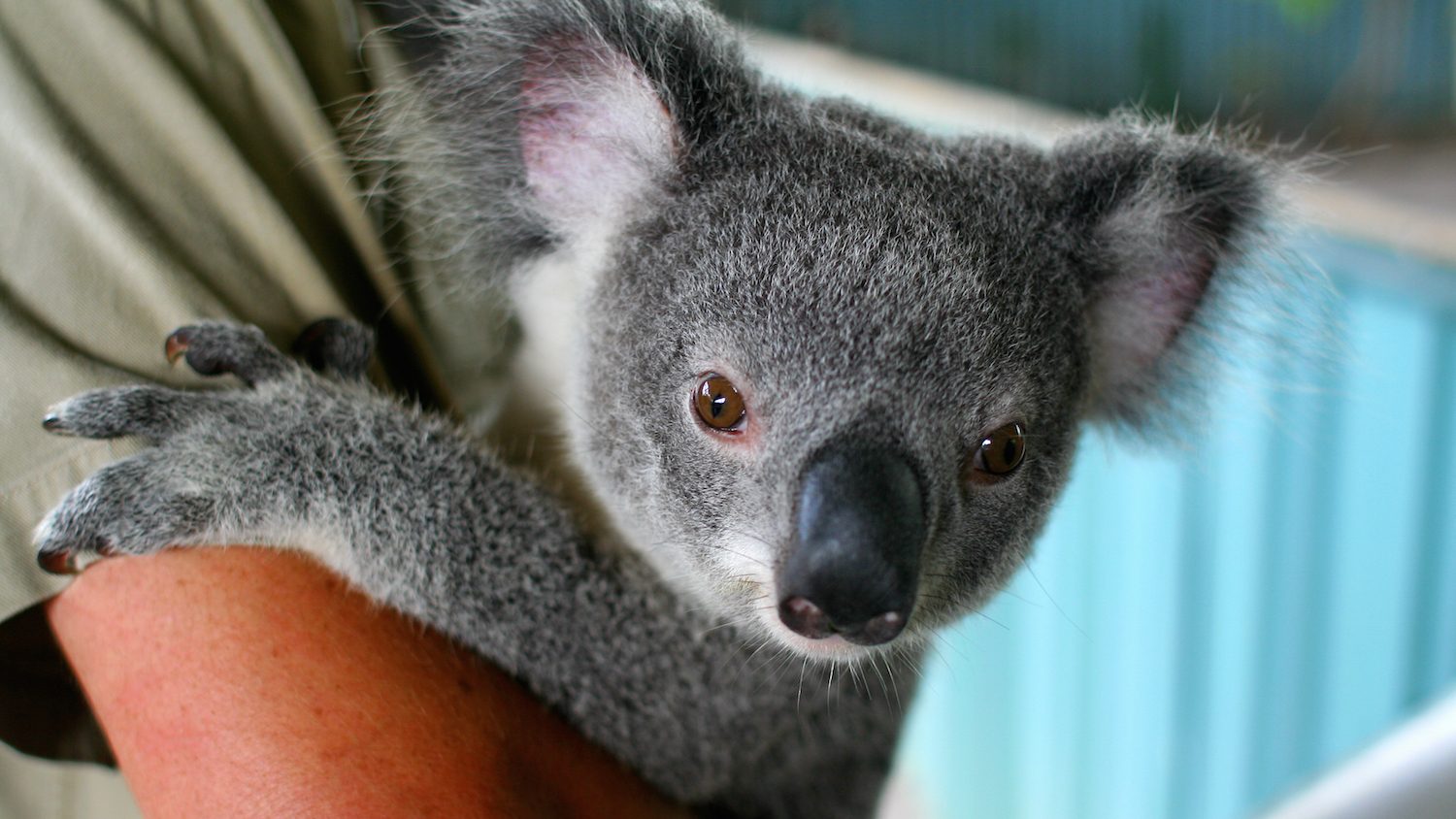
Beware the multi-thumbed dropbear. Photo © Taz / Flickr Opposable thumbs are great — humanity owes a lot of its awesomeness to the pivoting ability of this spiffy little finger joint. But koalas have one-upped us all: they have two thumbs per paw.
Koalas use their two opposable thumbs on each from paw to clamber about the eucalypt trees, munching as they go. Their feet are pretty weird, too: two toes on each of their back paws are fused together, and they use this “comb” to groom their fur.
If you’re feeling inferior, don’t. As cool as these extra appendages are, they’re powered by a brain that, as far as mammals go, is embarrassing. Compared to the size of their cranial vault koalas have absurdly small brains, the hemispheres of which Tim Flannery colorfully likens to shriveled walnuts perched on top of the brain stem.
-
Kangaroos have three vaginas.
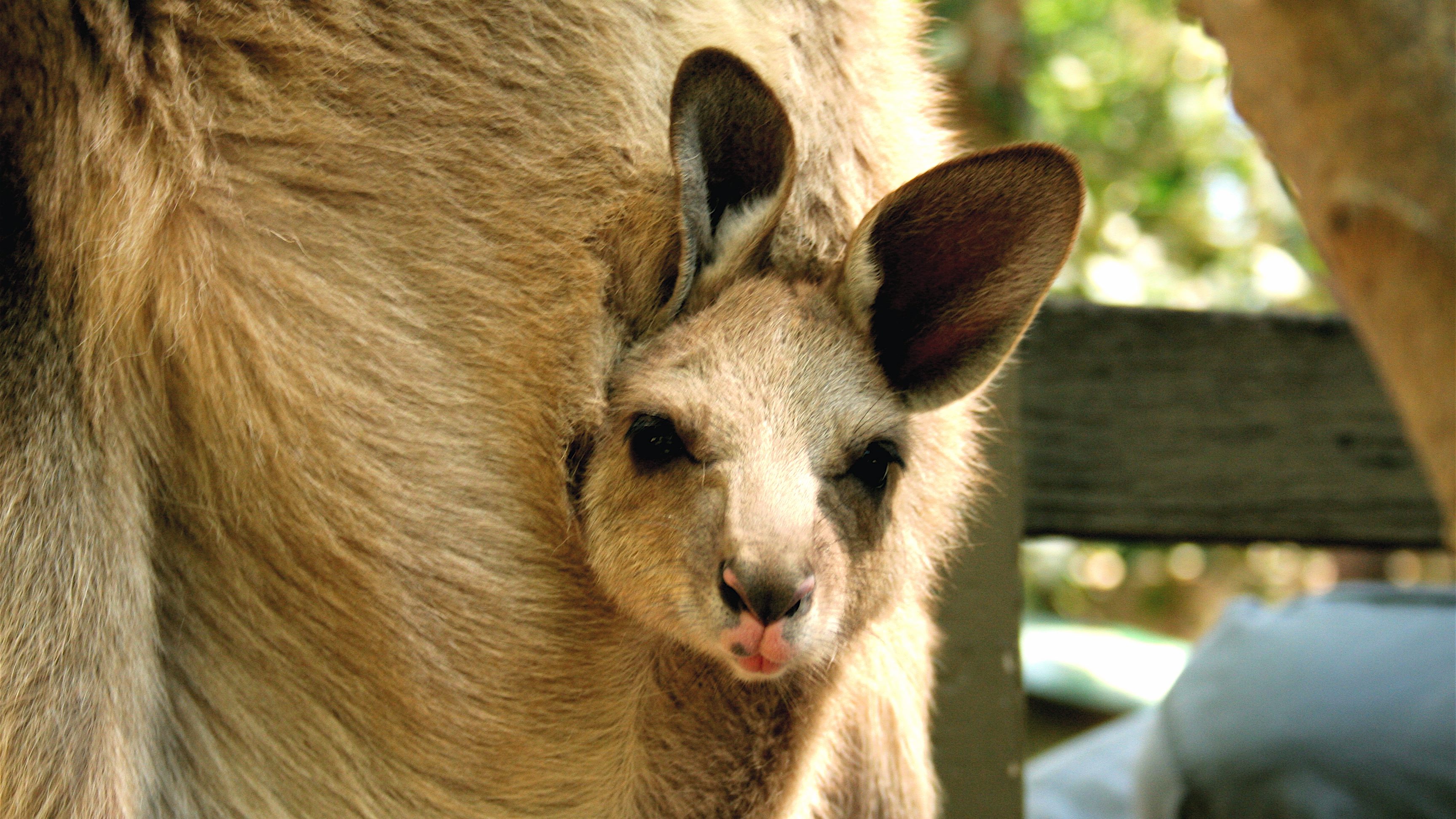
Three what? Photo © Aidan Jones / Flickr I’m dead serious. Three. Plus two uteri.
So what the heck is going on with the female kangaroos’ reproductive system? The two uteri sit on top of the central vagina, while the other two vaginas curve around the sides and meet at the bottom — forming a structure that looks like a giant circle with a line down the middle. The two curving, side vaginas carry sperm to the uteri. (Correspondingly, many marsupials have a two-pronged penis. But more on that later.)
The central vagina is for joeys only — the bean-sized unborn kangaroo fetus travels down this tube before being born and enduring an awful crawl up into his mum’s pouch. Thanks to the triple-vagina structure plus the joey’s major development in the pouch, it’s possible for kangaroos to be constantly pregnant.
Oh, and did we mention that all lady marsupials share this structure? Yep…. koalas, wombats, Tasmanian devils. Three vaginas.
-
Marsuipal pensises are weird. Really weird.
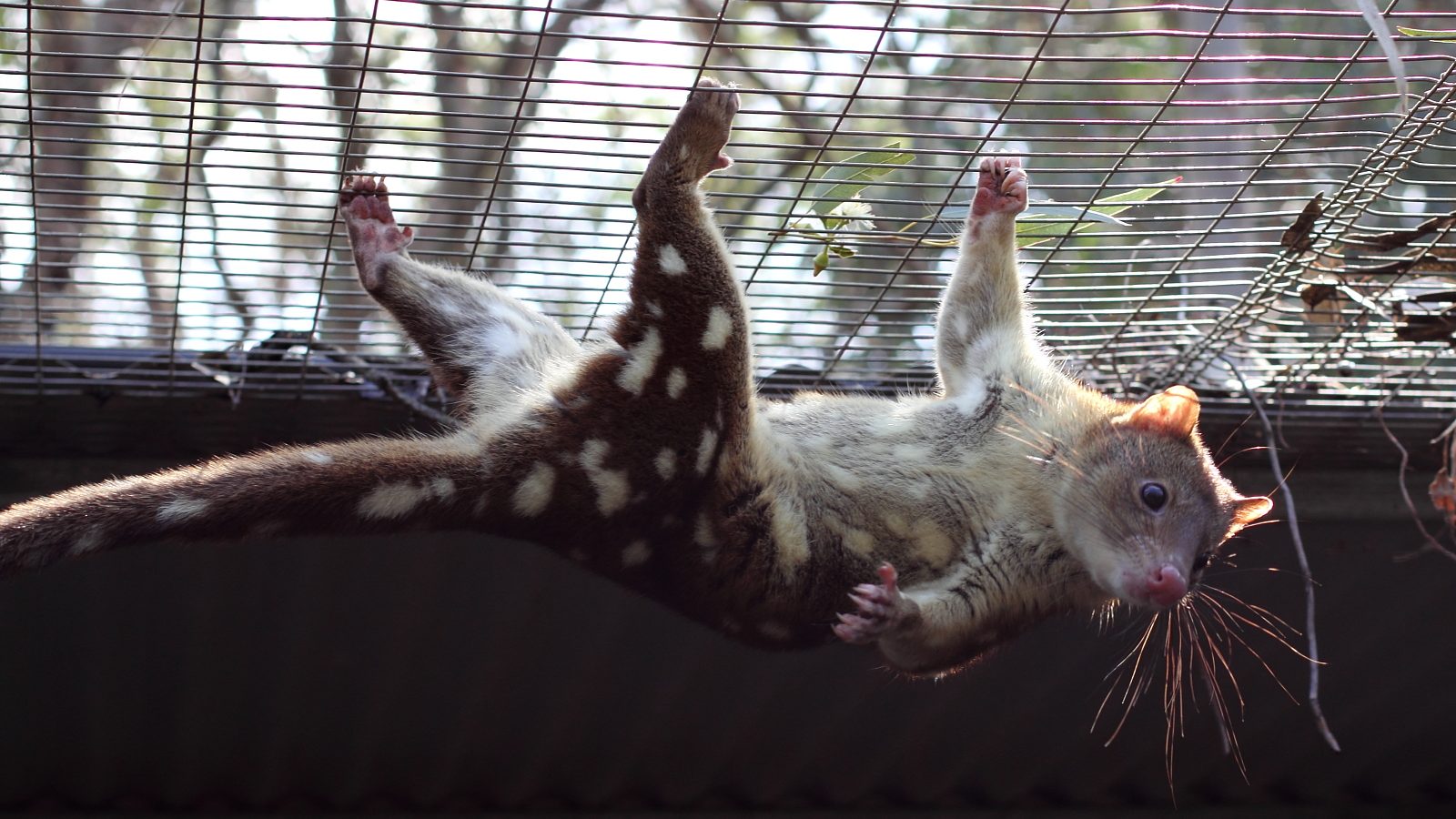
Just hanging, quoll style. Photo © S J Bennett / Flickr When it comes to male mammalian genitalia, things get a little weird down under. Pun intended.
All marsupials except macropods (kangaroos and the like) have a two-headed or bifurcated penis to correspond with the two side-vaginas responsible for sperm delivery. Weird, but sensible. But the strangeness doesn’t stop there: marsupials evolved scrotums independently from placental mammals, including humans. Despite the convergent evolution, there is one main difference — marsupial scrotums sit on top of (not behind) their penis. If that doesn’t put a little extra bounce to the kangaroo’s step then I don’t know what does.
And that concludes our tour through the bizarre world of marsupial genitalia. You’re welcome. If you want more, see this post on marsupial sex.
-
Platypus don’t have scrotums or external testes. But they are venomous.
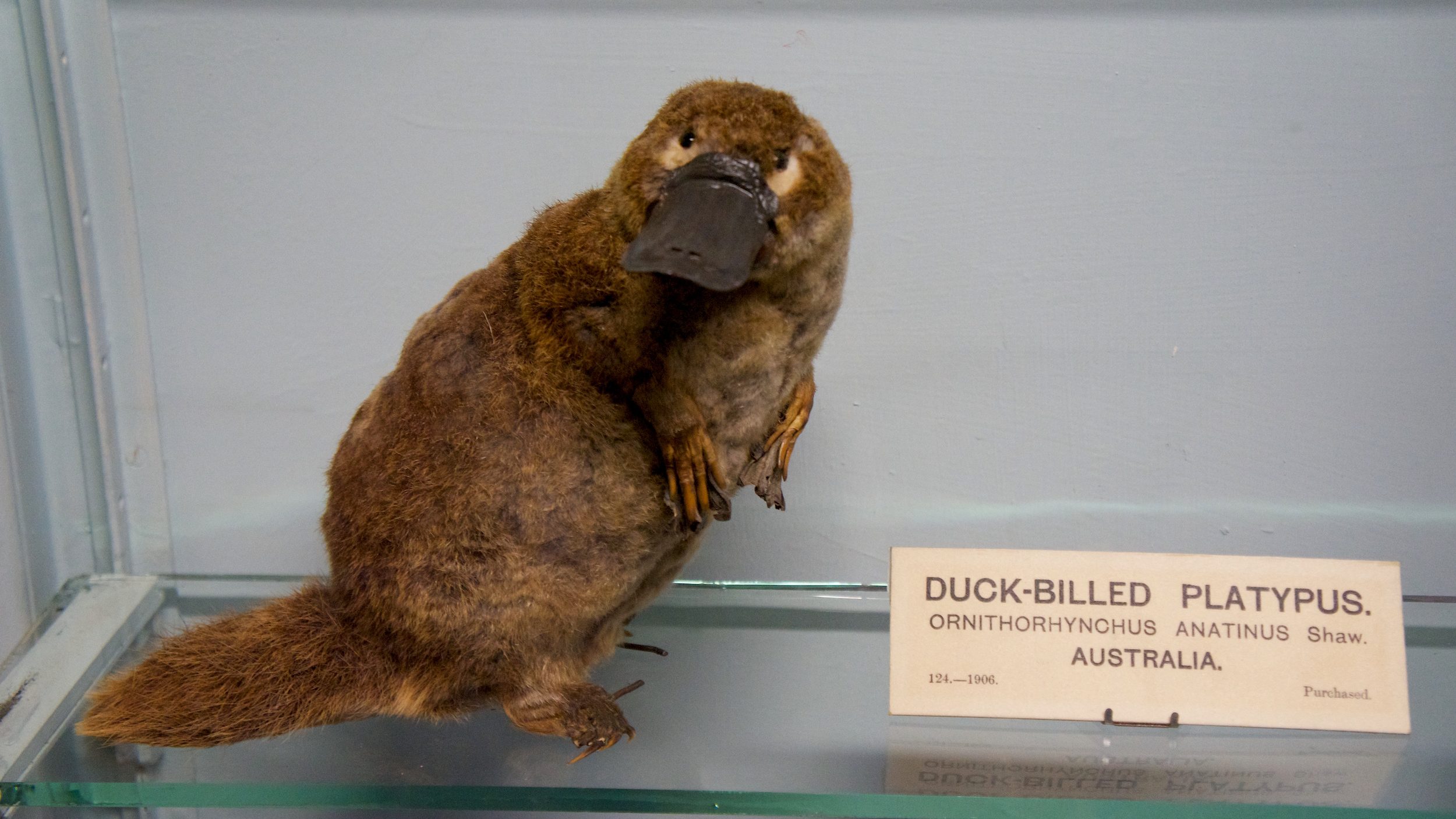
What are you looking at? Photo © Miguel Mendez / Flickr Monotremes — another of Australia’s mammalian oddities — may be even weirder than marsupials.
Consider the platypus. It lays eggs, secretes milk from its skin, and looks like cross between a beaver and a mallard. But it gets better: Platypus and echidna don’t have scrotums or external testes, their family jewels are stores safely inside the abdominal cavity. They also have — wait for it — a four-headed penis. Four. Why? The short version of this somewhat horrifying, hydra-shaped appendage is: because evolution. (If you’re curious, you can take the deep dive here.)
It gets weirder: All of their reproductive organs and waste elimination occurs out of a single hole — called a cloaca — just like modern reptiles and birds. (Again, like the weird four-pronged penis and egg-laying, this all goes back to evolution.)
What playtpus lack in the testicular department they make up for with a built-in weapon. Males have a venomous spur on each of their hind legs that they use to jab other males while fighting for mates. This spur is reason numero uno not to mess with a platypus, aside from not being a jerk and laws protecting a near-threatened species. Why? The venom causes crippling pain and is completely unresponsive to morphine and other high-octane painkillers.
-
Forget marsupials, rats and bats rule down under.
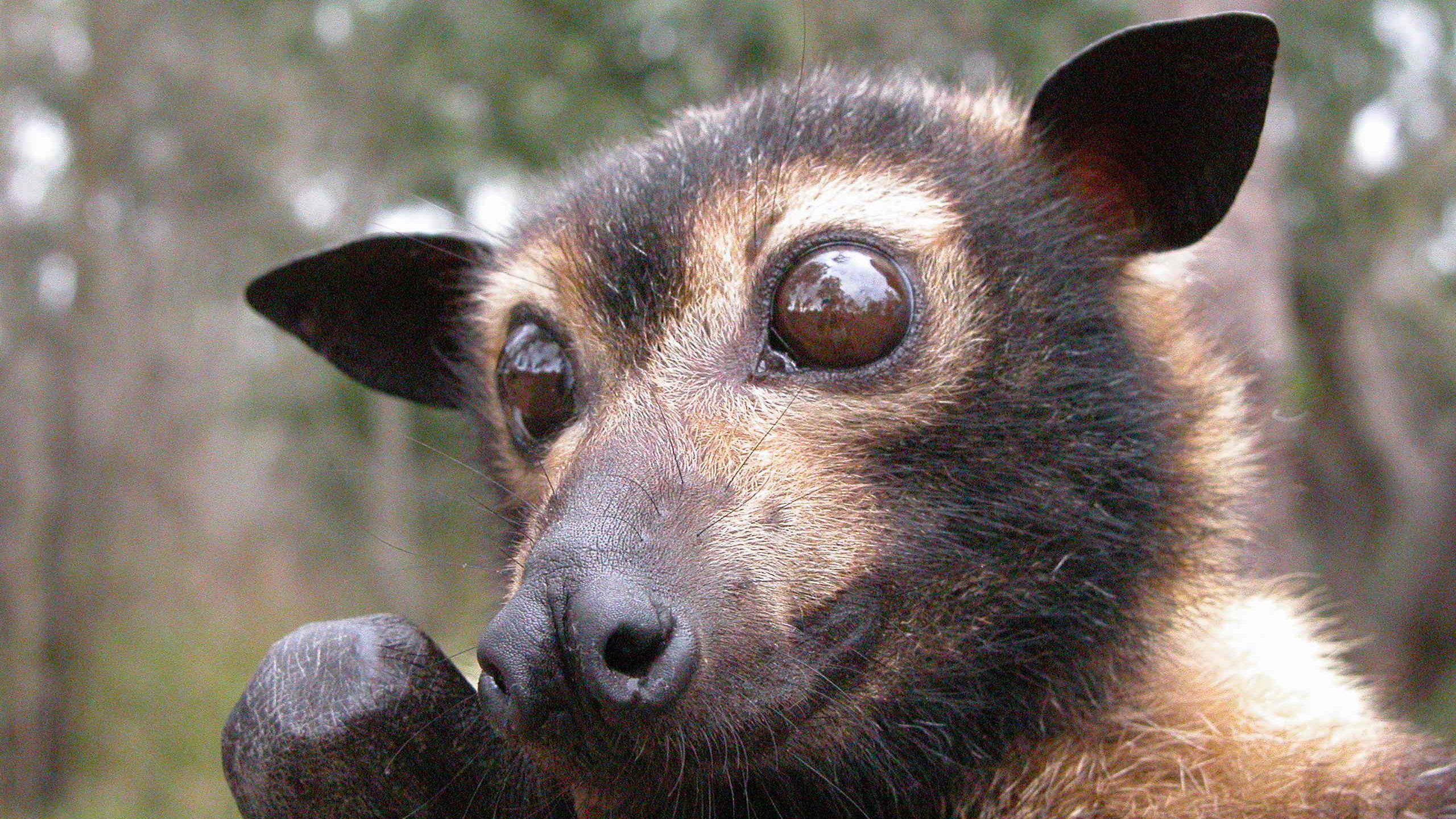
Spectacled flying fox are very endearing. Sort of. Photo © CSIRO Science Images Nature enthusiasts (myself included) spend a lot of time fussing over marsupials. They’re cute and weird and yea, it makes sense. But a head count of terrestrial Australian mammals shows that around 45 percent of the furry, lactating critters on the continent are rats and bats. By the way, that general ratio holds true for the rest of the world: One out of every four mammals on earth is a bat and 40 percent of all mammals are rodents.
A few highlights: The endemic, big-eared and translucent ghost bat, which looks like a demonic mammalian cross between a triceratops and and unicorn. The spectacled, little-red, and black flying foxes are just objectively awesome, with their perpetually inquisitive (and upsidedown) faces. The showstopper of the bunch is the grey-headed flying fox, which has a three-foot wingspan. Yikes.
On the Rodentia side of things we have some pretty hilarious and descriptive (if uncreative) names: hopping mice, pebble-mound mice, prehensile-tailed rat, rabbit rats, water rats, rock rats, tree rats, and stick-nest rats. (Ironically no kangaroo rats.)
-
Herps, herps forever.
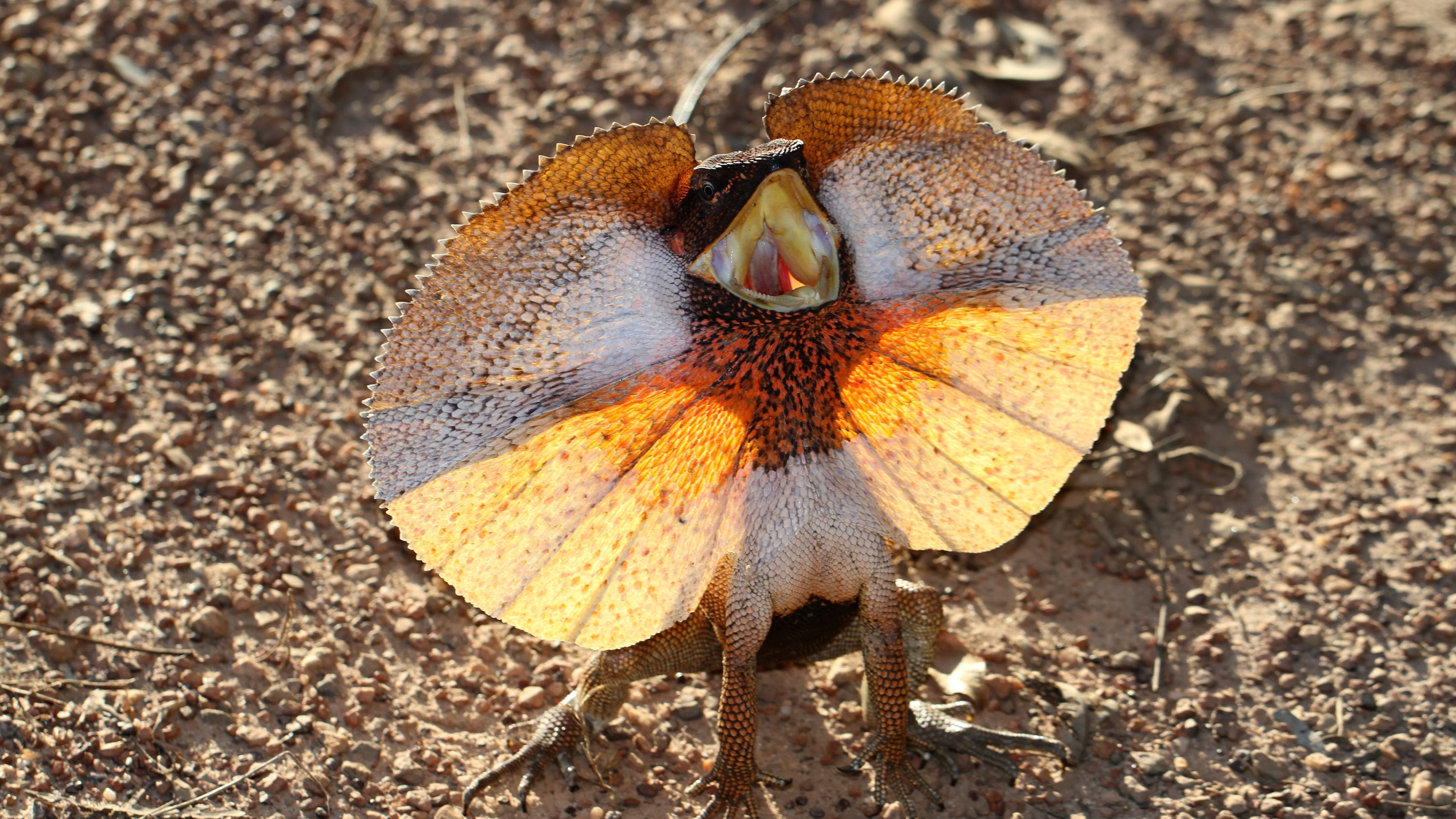
Come at me, bro. Photo © Matt / Wikimedia Commons This might not be surprising to the lucky generation of Americans that grew up binge-watching Steve Irwin’s Crocodile Hunter, but Australia is chock-full of reptiles. Snakes, lizards, goannas, skinks, turtles, crocs. Crikey, aren’t they beauts! (Sorry, I couldn’t help myself.)
Just how many reptiles are slithering about Australia? About half the world’s python species (Pythonidae) are found in Australia. Skinks (Scincidae) are the most diverse saurian group on the Australian continent (and globally), with more than 400 Australian species.
Some highlights: all of the blue-tongued skinks, frill-necked lizards (because obviously) and pig-nosed turtles. At the top of both the Food and Awesomeness Pyramids is the perentie, the fourth-largest lizard on earth. They can grow up to 8 feet long, are possibly venomous, and often stand on their back legs and tail to check out their surroundings. Hello, lizard.
-
Where the terror birds still reign.
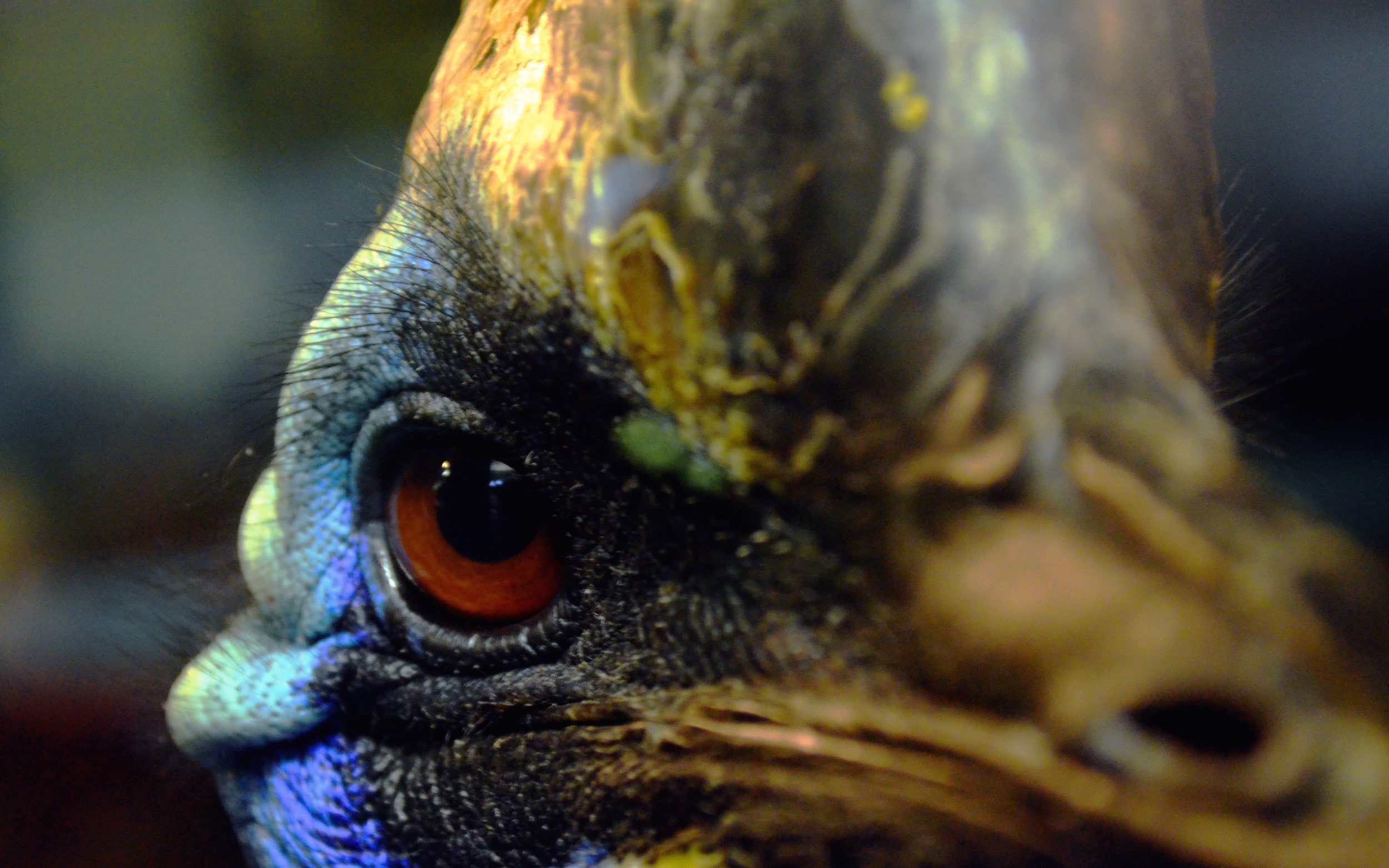
Soon. Photo © Matt Trollen / Flickr I spend a lot of time looking at birds, which as far as wildlife goes is a fairly benign taxa. But that’s not the case with Australia’s cassowary.
The first (and only) time I saw a live cassowary was in a zoo in Brisbane. I was very, very excited to finally see one, but as I watched it pace around its enclosure, glaring at everything, it made me nervous. Deep in some part of my reptilian brain, that vaguely malevolent, predatory pacing was still coded with “RUN.”
One of the three living cassowary species, the endangered southern cassowary resides in Australia’s northern rainforests. Habitat loss is taking a toll on the dwindling population, and unfortunately cassowaries are at risk of being hit by cars or attacked by dogs. No wonder they sometimes try to kick people death (says the internet).
Australia’s second modern terror bird — the emu — is less terrifying and more amusing. And because we’re in Australia, where the European settlers could never appreciate the local fauna, some idiot had the bright idea of introducing ostrich to the bush. So there are actually three species of massive modern-dinosaur roaming Oz. Of course.
-
Australia has more venomous snakes than non-venomous snakes.
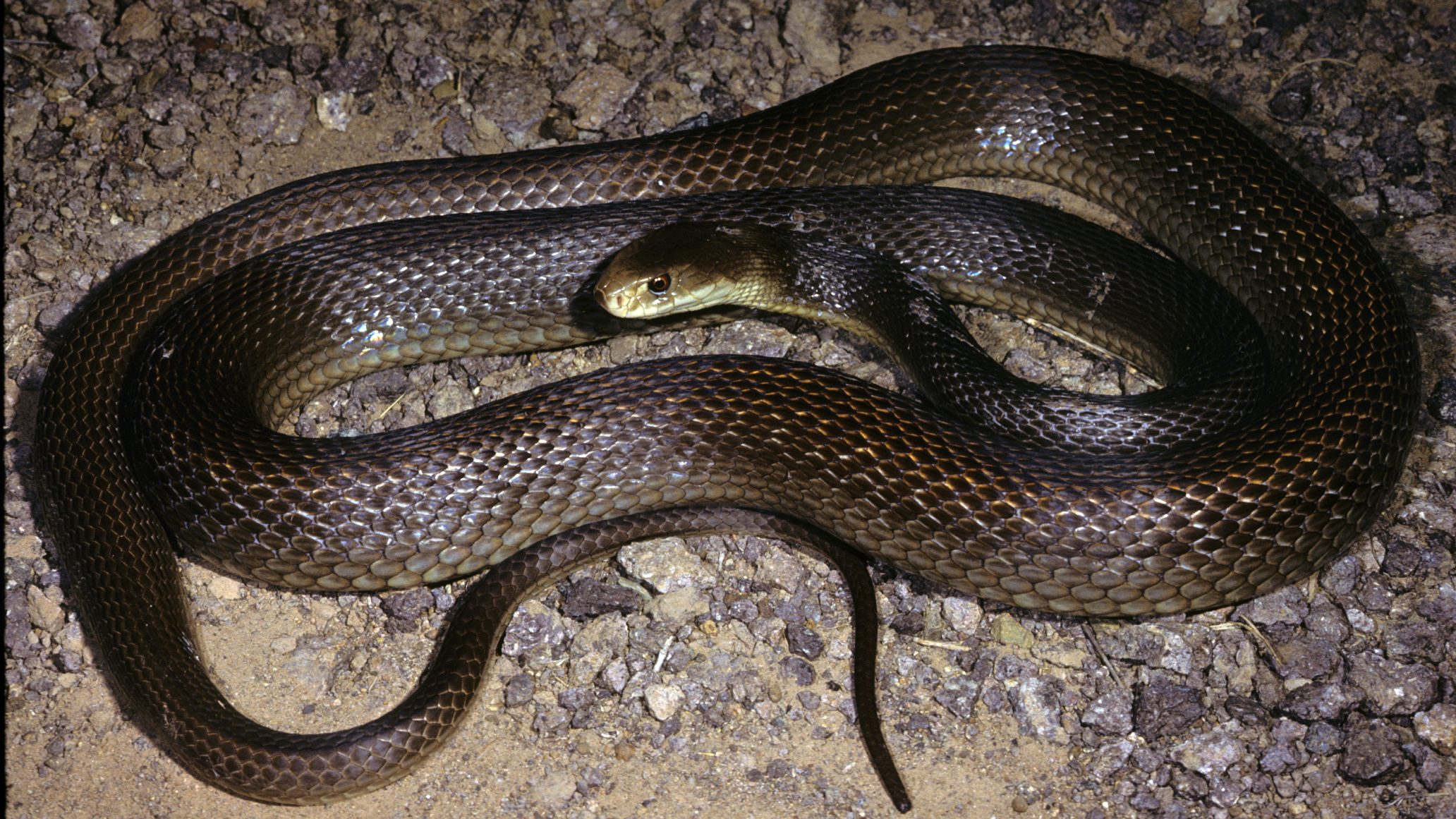
A coastal taipan, a highly venomous species from Australia. Photo © John Wombey / CSIRO Science Images Speaking of reptiles… as much as I hate to play into the everything in Australia is out to kill you mythology, it’s pretty impossible to ignore the stupefyingly venomous power of Australian snakes. But that power is awesome, not awful. Australia is the only continent on earth where venomous snakes outnumber non-venomous ones. If that alone weren’t enough, a good number of the “world’s deadliest” call Australia home.
Several factors make a snake more or less “deadly” to humans: how frequently you encounter them, how aggressive they are, how much venom they inject per bite, availability of the antivenom, and potency of the venom. When it comes to potency, herp folks rank snake venom by the LD50 scale, which refers to the amount of venom that, when injected into mice, kills 50 percent of those injected. (Sorry, mice.) The smaller the amount of venom to reach LD50, the more potent the snake.
The inland taipan (Oxyuranus lepidotus) features on (and often tops) every “most deadly” list on the internet for two reasons: its venom is highly potent and it injects a lot of venom with each bite. According to Wikipedia, this species packs enough punch to kill 280 men (or 1,085,000 mice) with a maximum dose of venom.
Other Australian highlights on the Do Not Poke With a Stick List: the eastern brown snake (Pseudonaja textilis), the coastal taipan (Oxyuranus scutellatus), the tiger snake (Notechis scutatus), Dubois’ sea snake (Aipysurus duboisii), and the black tiger snake (Notechis ater).
That’s a lot of dead mice.
-
Even the non-fauna inhabitants are weird.
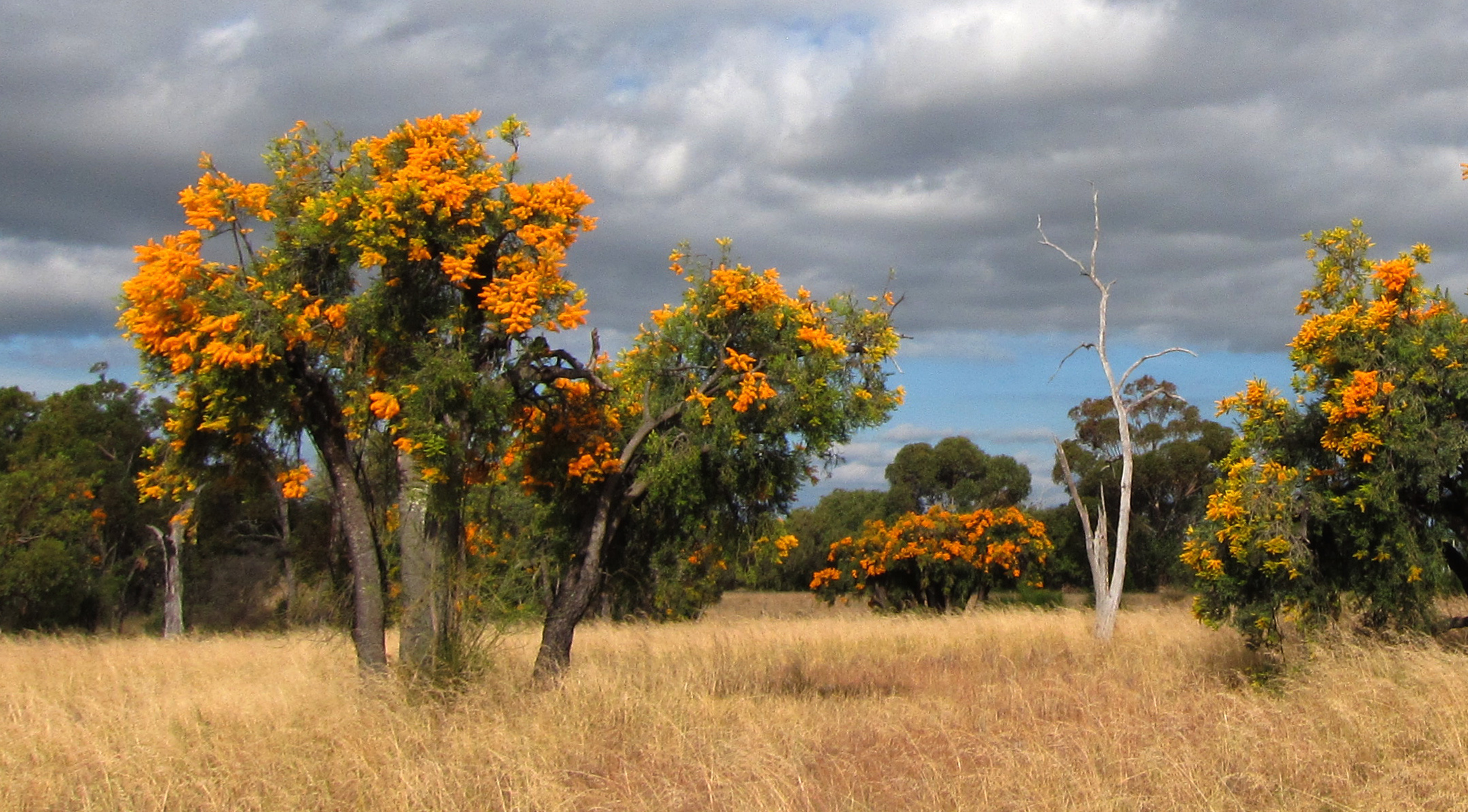
Christmas trees blooming in Western Australia. Photo © enjosmith / Wikimedia Commons Really. Like the continent’s furry, four-pawed critters, Australian flora is equally diverse. And bizarre.
While Europe makes due with one (albeit iconic) species of mistletoe, Australia has 90+. One tree-sized species, Nuytsia floribunda, is a parasite that uses specialized root structures to steal nutrients and water from other nearby plants. There are also a lot of carnivorous plants. And by a lot we mean more than 120 individual species.
Perhaps the coolest thing about Australia’s plant diversity: the rainforests found in the two southern corners of the continent, plus Tasmania, are remnants of the forests blanketing the supercontinent Gondwana some 200 million years ago. Species like araucaria, Antarctic beech, and the Wollemi pine, which was only known from the fossil record until someone discovered a small grove of living pines in 1994. Even better: despite the awesome forces of plate tectonics, the same flora is still found at the tip of south America, southern India, and southern Africa.
Finally, because it just wouldn’t be right to end without one more marsupial fact, albeit plant-related: the impossibly tiny honey-possum is the only non-flying vertebrate that relies entirely on flowers for its food.
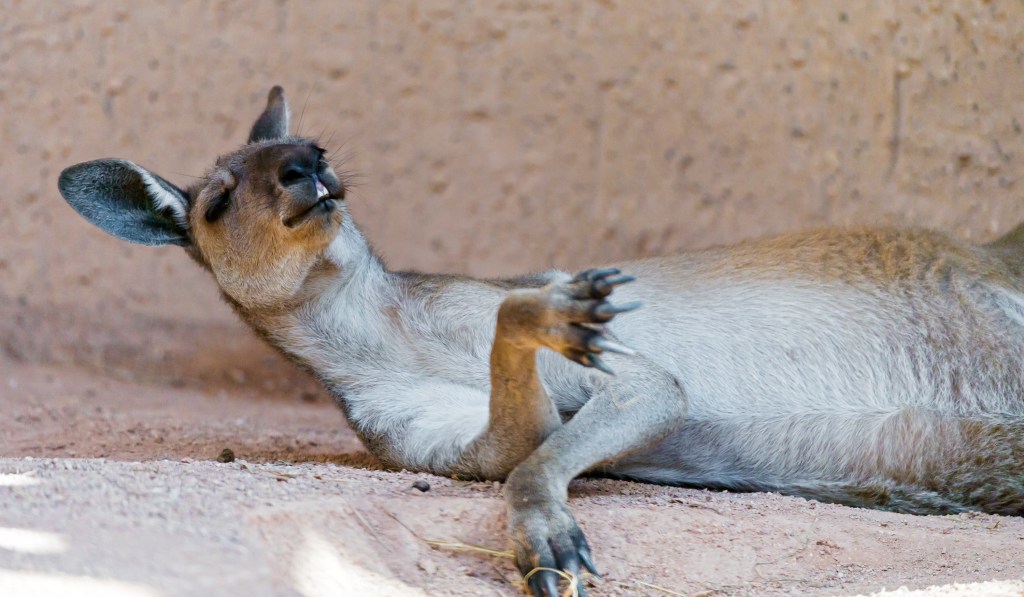



Great, funny and insightful article. Thank you!
Just a question about the timeline for marsupial migration, I always thought that during the breakup of Gondwana that South America reconnected with North America after it was separated from the Australia /Antartica complex. Obviously all of these cratons were connected when part of Gondwana. I have no problems with marsupial/mammal ancestors and that these were spread across many present day continents. However this would be before 65 million years ago when this fossil was alive, meaning that this branch of marsupials became extinct.
Justine,
Thank you for fun, clear and educational information!! I loved to read it. And I learned a lot!
Love from Else in Sweden – without marsupials….
Really cool!
I laughed out loud reading this piece — thanks, Justine, for brightening the first day of the new work week. I was particularly interested in the content because my husband and I are taking a Bucket List trip to Australia in November/December (3 weeks total), during which we’ll visit Tasmania as well. If we ever planned a camping/hiking trip into the back country (we didn’t and won’t), this article would have put the kibosh on it right away. We’re sticking to the main roads and beaches, and will view wildlife in the confines of zoos and parks.
Amazing!
Do monotreme females have four vaginas? or four-pronged vaginas? The people demand to know.